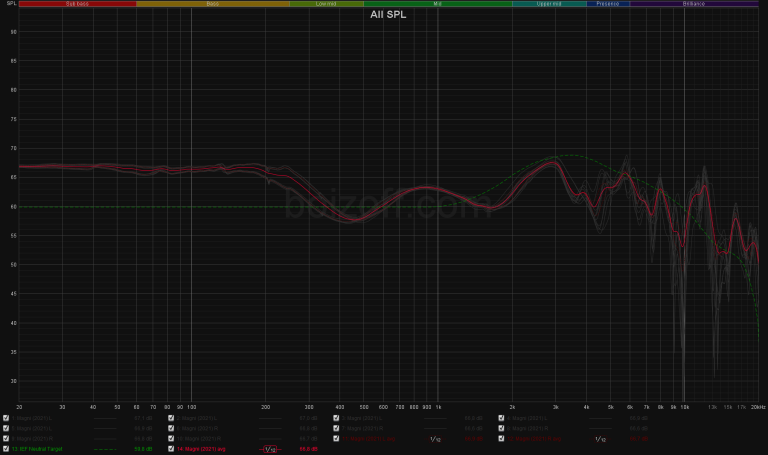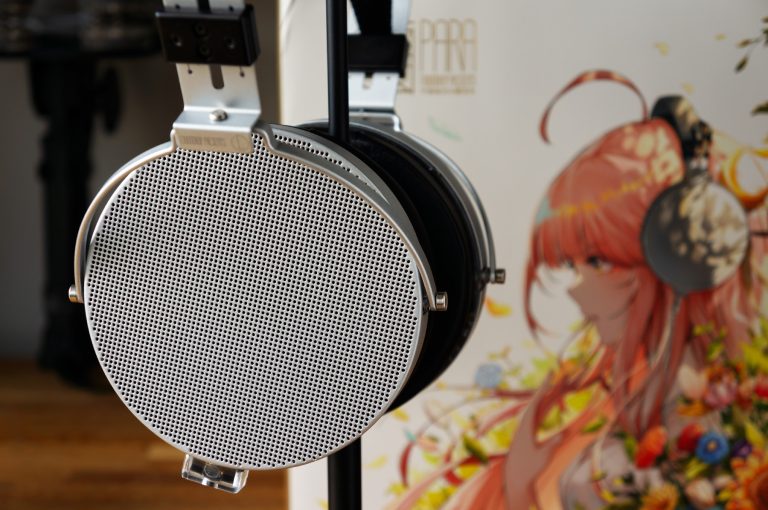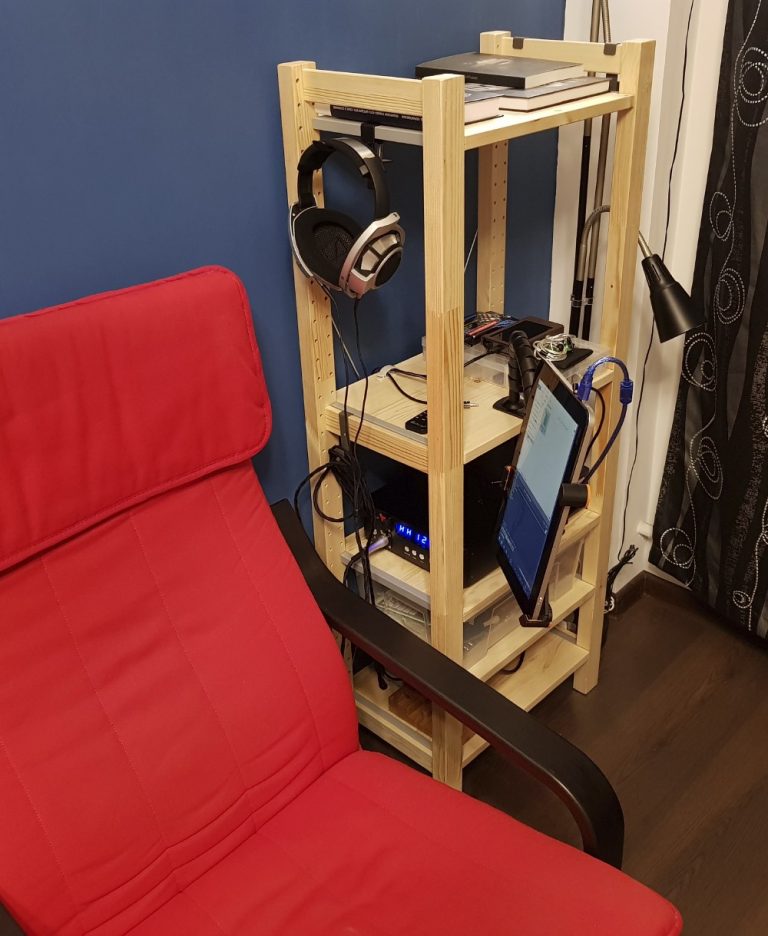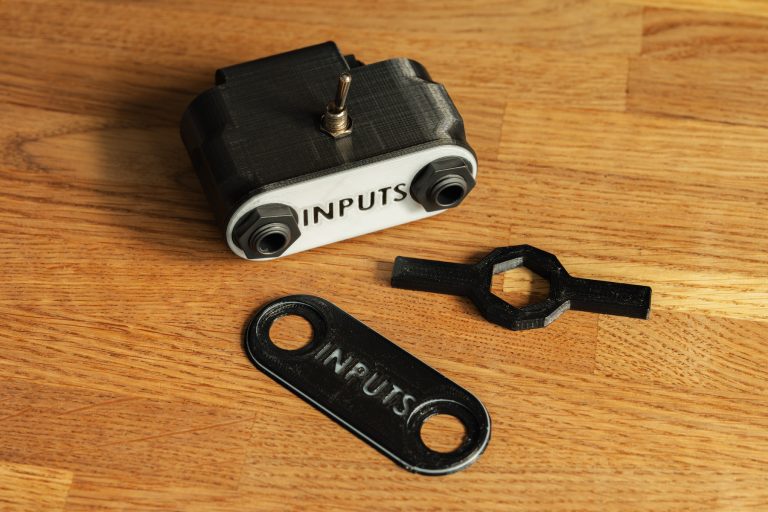HiFiMAN Sundara. The inch-perfect ones
There are different models of headphones I’d love to try SO much that I’m ready to buy them. Like, to spend literal money, not just get them for a test-n-review. And today I’m going to tell you about one such model.
It’s HiFiMan Sundara – open back isodynamic headphones for around $280.
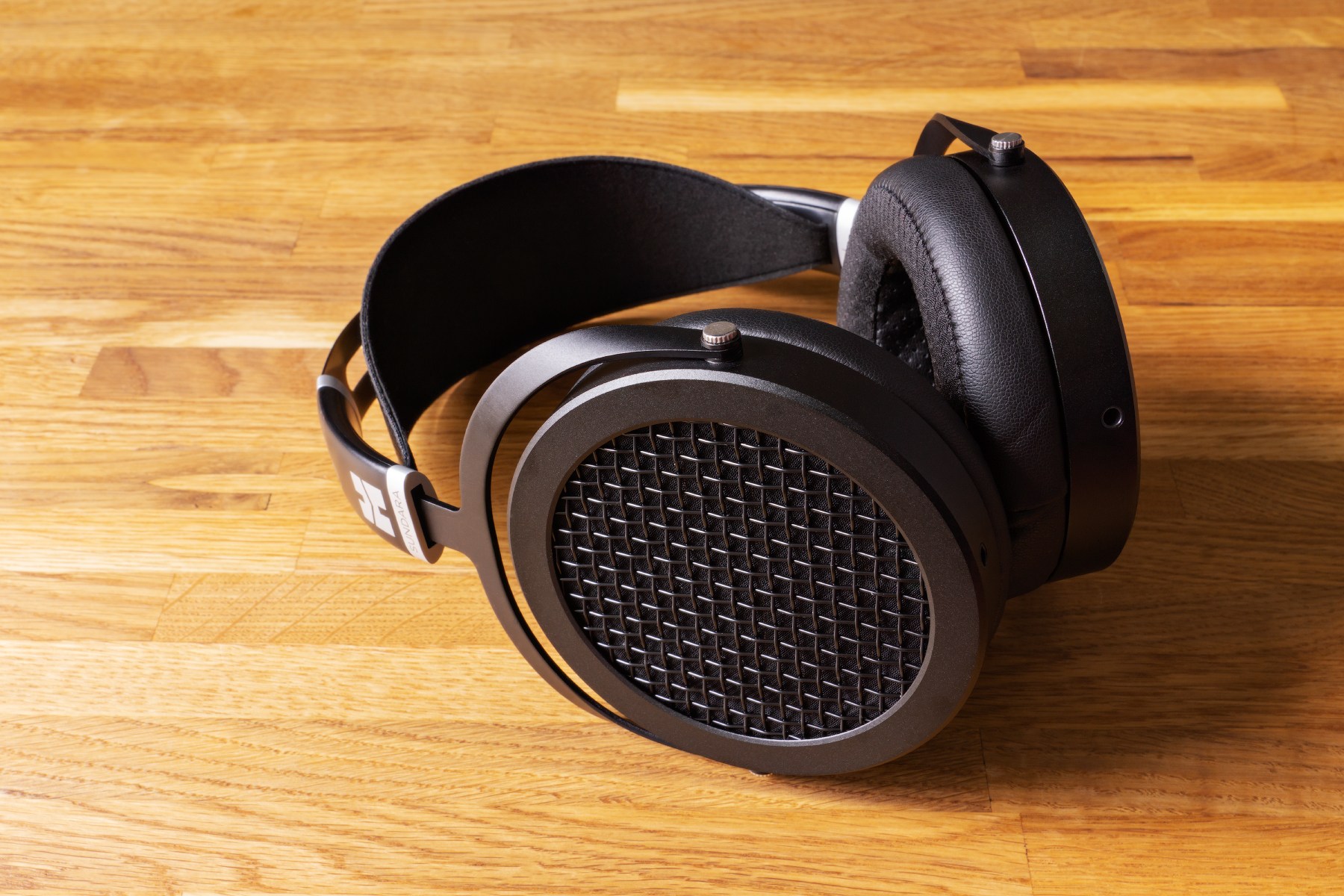
HiFiMan Sundara versions
There are actually two versions of the Sundara, and most agree with that. The second one has been produced since 2020 and has different sound tuning, beveled earpads, as well as greater reliability. Though Fang Bian himself, head of the HiFiMan, denies it. ‘There is no official version 2 of the HiFiMan Sundara, he says. Neither the drivers nor the cups have had any changes or silent revisions to them in the past calendar year. The only changes have been a cosmetic improvement to the dust cover, as well as improvements to the pad structure to ensure reliability and longevity. There have not been any changes to the pad material.» source
However, they’re really different, and you really can visually distinguish the second version from the first one by the earpads, as well as the kit: for the second revision, the warranty card is a large thicker sheet (no revision note), and the first version has it as a tiny piece of paper with a sticker and a ‘2018v01’ text.
In this review, I’m going to tell you specifically about the current – second Sundara revision.
What’s included
- Box
- Warranty card
- Instruction manual
- Cable with 3.5 jack connector
- 3.5-to-6.3 jack adapter
I don’t want to spam you with photos: there’s nothing interesting there. What’s important though, it’s that all this was packed in an additional shipping box. And yep, not a single scratch on the headphones upon delivery.
Design, assembly, technology
The design is… as efficient as possible: the manufacturer opted for simplicity to ensure high replication accuracy and, of course, low production cost. All parts are metal and have extremely simple shapes. The silvery plastic plates sporting the model name are frankly loose. The earcup mounts have several fixed positions, the paint on the inner surface begins to come off immediately. Do the mounts hold their positions okay? Nope, there’s quite a wiggle in every position.
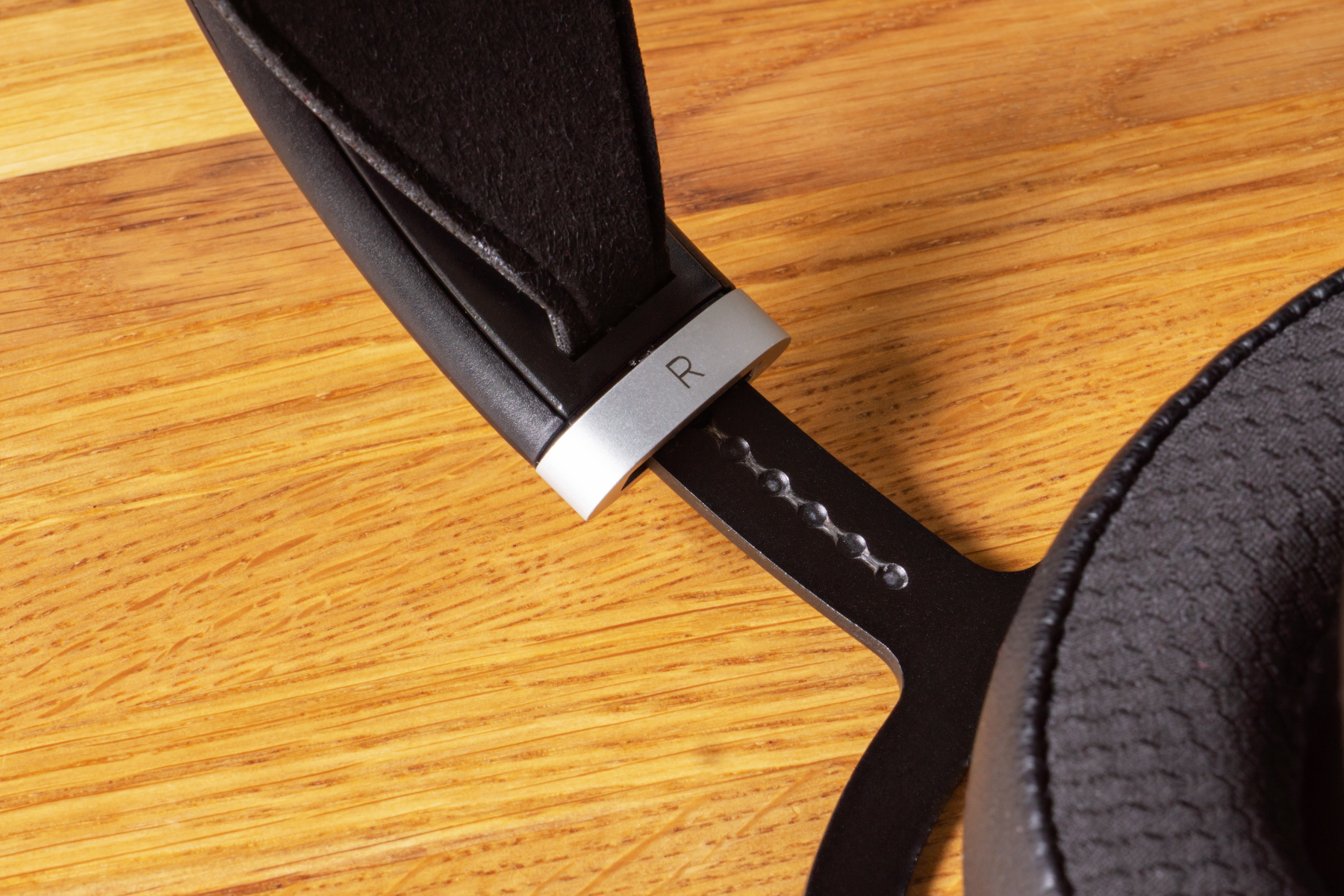
The headband has some faux leather lining, and the headband itself is made of a rather thin piece of metal which still retains the form, and it’s good.
The main part of the isodynamic driver is a planar membrane 1 to 2 microns thick. That’s what the manufacturer states.
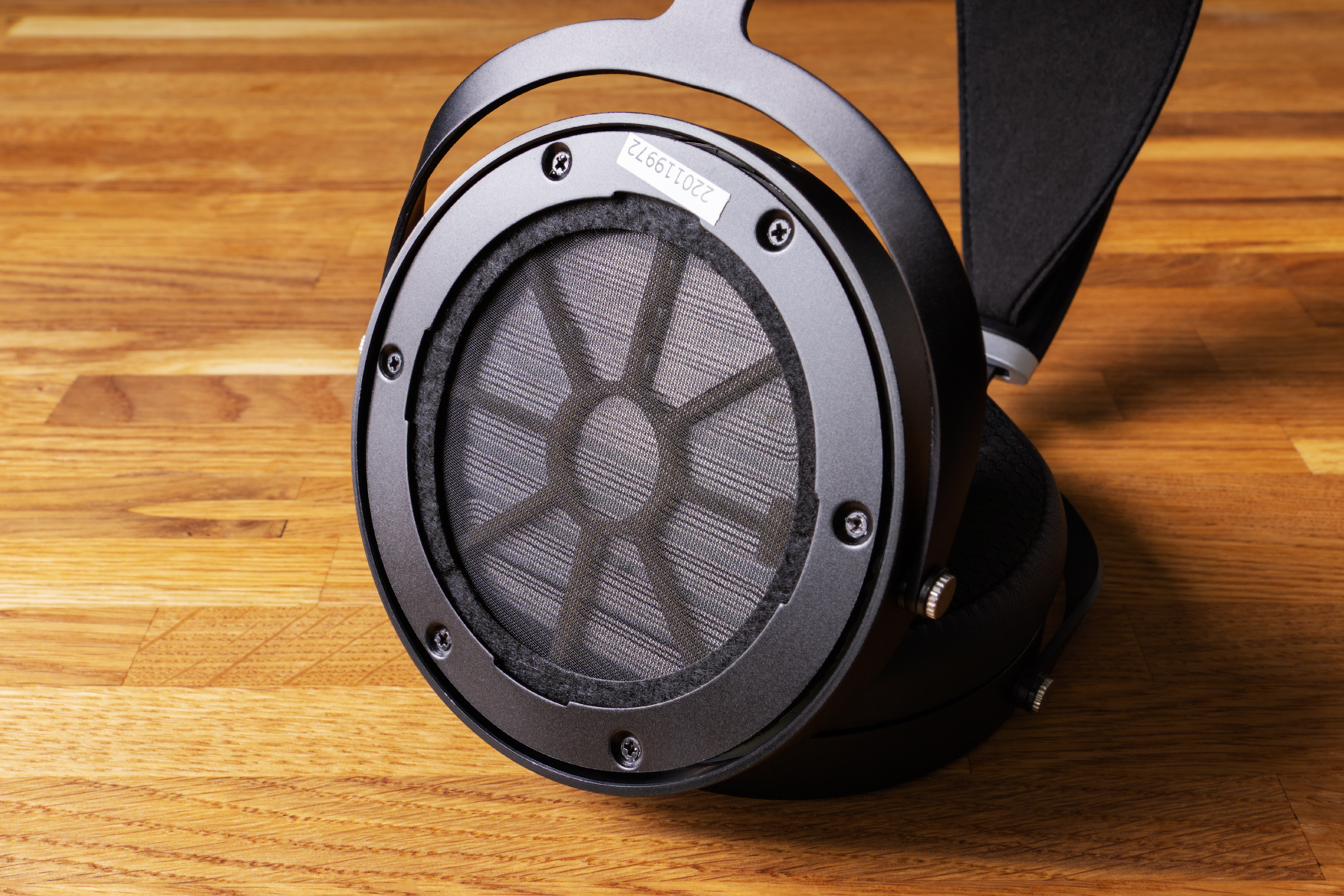
The overall result is a minimalistic, budget-friendly, more or less orderly item. Look at the pic above. What do you think it is? Oh, it’s the rightmost screw with a hecked up slot! Well, we’re not here to blame the assembly guy (are we?).
Let’s move on to the cable. You wouldn’t believe how ugly it is. It’s just something you’d burn without hesitation. It’s as thick as an IV tube and very flexible. Wanna use it? Try to unbend it first. In other words, the cable isn’t too convenient to use. The connector on the source side is L-shaped. A 3.5 jack connector is used to connect the cable. Just in case you’re thinking ‘Sounds like another crap so far, not worth reading the whole thing’, please wait. Keep reading. It’s gonna be okay.
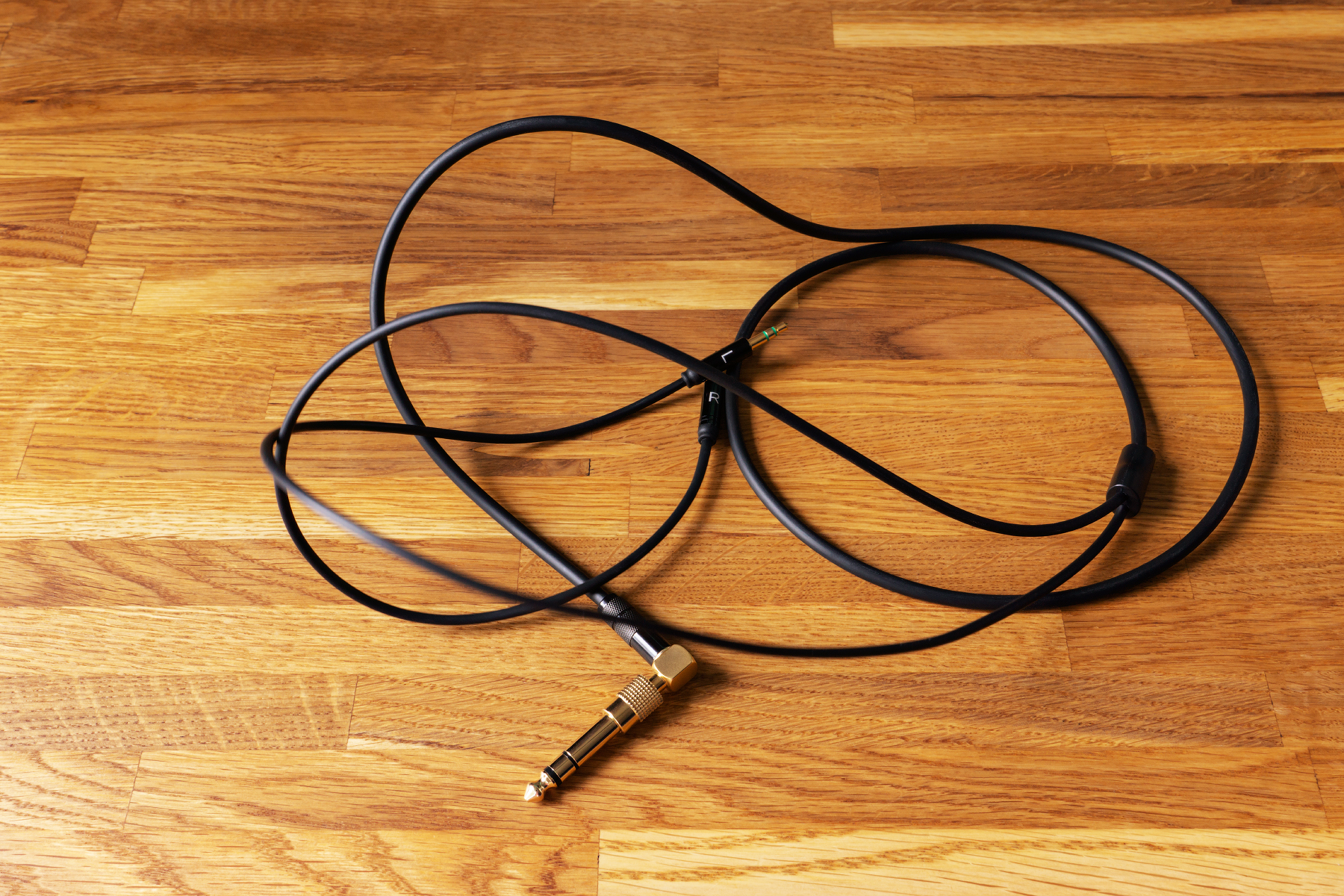
Ergonomics
Despite the rather shallow earpads and the earcups you virtually can’t turn vertically (and this ‘virtually’ is only due to loose mounts), the Sundara sit perfectly on the head. Apparently, the small weight, the earpad bevel angle and the materials they’re made of play their role pretty well.
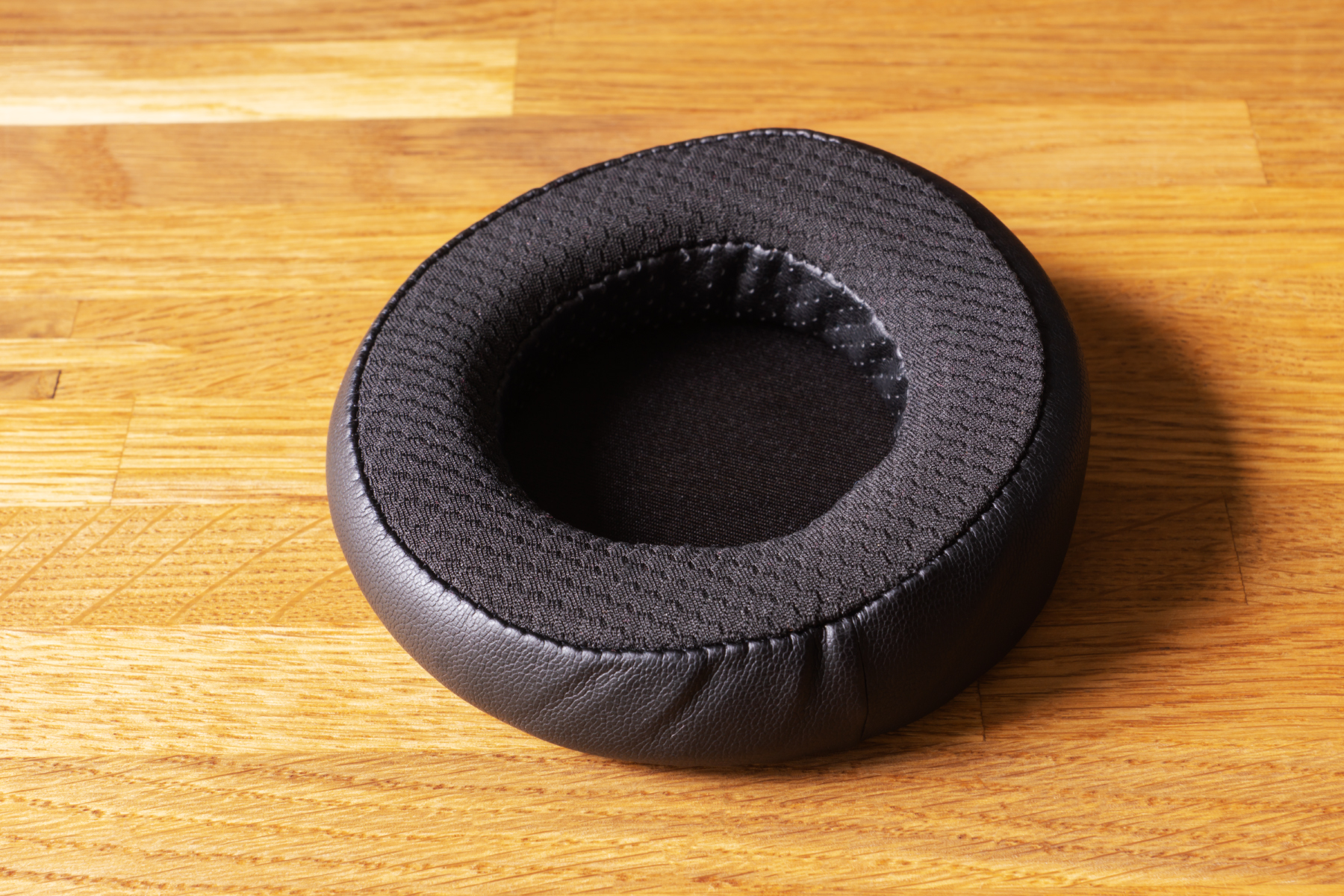
Only the inner side is perforated, and the earpad touches your head with the fabric insert. The outer surface has no holes of any sort. Another thing: you don’t pull the earpads on the earcups (as it’s done in most inexpensive models) – you actually latch them in place.

That’s why there are these plastic rings supplied with any Sundara earpads if you browse for some on Aliexpress. The regular (manufacturer-supplied) version the faux leather layer is simply glued to the plastic part. Why would they complicate the design by this? Send wrong answers only.
I consider my head to be a rather average-sized, and the Sundara pressure is just right: neither excessive squeeze nor falling off. The earpads, though not exactly thick, still ensure enough space for the auricles, and the fully open back design won’t let your ears boil inside. Therefore, you’re good to listen to your Johnny Cash for at least 4 hours.
Quick specifications overview
- Design: over-ear, open back.
- Driver type: isodynamic, 80-mm membrane diameter.
- Impedance: 37 Ohms.
- Sensitivity: 94 dB/mW.
- Weight: 388 g without cable.
Subjective sound impression
I’ve been testing these headphones for about 30 hours.
My first impression was… What a surprisingly balanced sound delivery! The frequencies are reproduced so accurately, to be honest. The sound is similar to what the neutral armature headphones feature: it’s ‘dry’, ‘fast’ and very detailed. And, like any neutral-tuned headphones, the Sundara kind of push you to turn up the volume. And they actually respond perfectly to the volume change: no sibilants, humming or other crap here – just the bass pounds even harder, and even more recording nuances appear in the upper frequency range.
What would be the key words to describe my perception of Sundara’s sound: it’s balance, technicality and detail.
Well, if you dive into the details, then the subbass and bass are heard quite linearly. The bass is very sharp, flexible, played just at the right speed and strictly in the right quantities. I even switched the ADI-2 DAC to NOS (Non-Oversampling) mode to get the best impulse response and to assess the ultimate ‘speed’ of the sound. And with this approach, the Sundara’s lower-frequency range seemed to me almost ideal in terms of perceptibility, ‘speed’ and dynamics. In this sense, these headphones are perfect for accurate reproduction of metal music of any complexity and speed or any electronic and dub tracks saturated with lower-frequency sections.
In the mid-frequency range, a section around 750 Hz stands out a little, but you can only hear it clearly when testing a swipetone. A small dip at about 1.5 kHz becomes obvious, too. It slightly (I mean really – just a tiny bit) makes you farther from the vocalist and levels the effect of presence. Otherwise, there’s absolutely nothing to rant about: jazz, indie rock, trip hop, any guitar music sound just charming.
As for the higher frequencies, they’re tuned at the very edge of what’s acceptable: you definitely can’t say the Sundara are ‘light’ or (have a heart, you) ‘sharp’, ‘sibilative’. Though you certainly will feel some highlights in the upper-frequency range in some tracks (mixed to be listened to with mass-market models). And this is the moment where I say: the Sundara are unbelievable when it comes to academic orchestral music and any chamber live recordings.
And as if you didn’t notice, I think the Sundara are extremely versatile, which shouldn’t surprise you: these are neutral-tuned headphones, and I’m an avid fan of such a sound delivery myself, after all. The Sundara pull it all from any recording to still sound technical, even micro-detailed, and at the same time – musical on any well-recorded and mixed track. They somehow bring joy to your ears even after a long, long time of listening to them.
This is actually an amazing combo, I must say.
As for the sound stage, then these don’t reveal any secret hues, and the stage space and depth are reproduced just accurately within the recording. The sound source positioning is between okay and just good: no revelations here.
And the last observation: if you pull an earpiece slightly away from your ear, just half a centimeter, the lower-frequency component gets amplified. I believe that any thicker earpads you could buy elsewhere would make the sound more subjective, giving it ‘warmer’ features.
A few words about amplification
The manufacturer’s marketing publications claim that these headphones can be connected to a smartphone directly. Let me point out: you’d certainly WANT to turn up the volume when listening to the Sundara, okay? Their sensitivity, though, is 94 dB high, which isn’t the highest itself, and thinking about the resistance level of only 37 Ohms, a relatively powerful source will be needed. Like, something more powerful than an average smartphone.
With the ADI-2 DAC, my ‘this is fine’ spot was somewhere at a -28 dB volume on a -94 to +15 scale in ‘High Power’ gain mode. The Focal Utopia (104 dB/80 ohms), for example, are literally yelling like a banshee already at -40 on the same scale. With the Hiby R5 music player, I set the volume at 87 percent. The power of the RODE AI-1 was already enough at 40 percent of the wheel rotation, but the AI-1 is always amazing if talking about gain.
So! Keep in mind that you’d really want to use something more powerful than your PC or laptop or smartphone (maybe unless you own one of those edgy devices).
Frequency response measurements
To make measurements, the headphones were connected to the RME ADI-2 DAC in ‘High power’ mode. The measurements were made using a rig conforming to the IEC60318-4 standard – with an auricle and auditory canal simulator. For each of the earpieces, the measurements were made until 5 reliable and stable measurements were obtained for the left and right channels; any deviant measurement results were excluded. The smoothing is indicated on the graphs. I’ve described the limitations of the rig and the headphones measurements in general in this article.
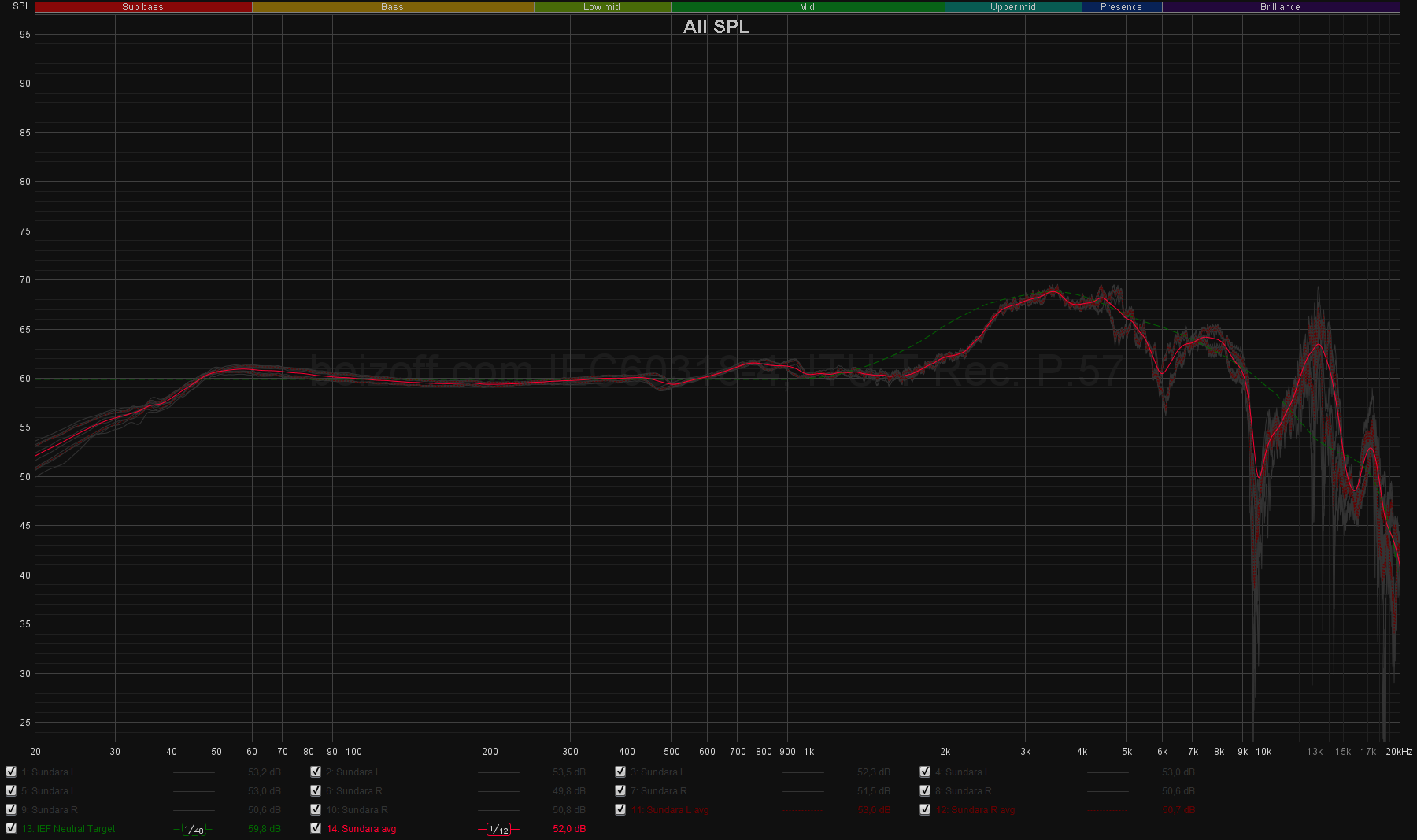
What do I have to say based on the measurements?
- The channels are well balanced.
- The 45 to 600 Hz section is absolutely linear.
- At 2 kHz, there’s a smooth decline of -3 dB at the lowest point.
- The 2.8–9 kHz range is almost perfect.
- The dip at 9.7 kHz is most likely caused by the rig’s resonance. Can’t hear it myself.
- I also can’t hear that rise at 13.5 kHz. Human ears are all different, remember?
I’d also note that these are the first headphones I’ve ever touched, the frequency response of which doesn’t depend on rotations or shifts at all. And since their earpads are quite thin and dense, then they fit tightness would be almost the same for any head. Human head, of course. Looks like the sound will be the same no matter how you put them on your head.
Summary
There’s exactly one thing I don’t really get about these headphones. Why aren’t they an obvious and forever recommendation and a ready answer to whoever longing for some good open back headphones?
A balanced technical sound delivery? Check. Some deep and dynamic lower-frequency component? Yep. Clear mid- and a great articulated upper-frequencies? Here. The only reason you wouldn’t love the Sundara (I could think of) is you probably not liking such a sound like at all. But even in this case, I really, really advise to at least take a look at them, to consider the Sundara, to give them a chance! Just look out for any discounts on those, and maybe…
Warning! Don’t get me wrong: I’m not saying the Sundara are the Moondrop Chu among the open back planars, they aren’t like ‘the sound is nothing to write home about, but at least they cost a dollar’ (this niche is already occupied by the HE400se, okay). The Sundara are very, very good in general irregardless of the price ranges, and I wouldn’t be surprised if they become the first and forever love for someone.
I’d say they do have their weak points, such as this stupid cable and somewhat clumsy design solutions (leading to a large range of doubts about their durability and reliability). But we can (okay, I can) justify those by the manufacturer wanting to reduce the cost of production as much as possible but to have mercy on the sound quality. Speaking of which: if they made me listen to the Sundara without saying they’re Sundara, I’d say this sound costs about $1000 (and I’d never have doubted whether the answer was correct). Again, they costed me $280 during a sale on Aliexpress. And I bought them just out of curiosity. And I’d pay more for such a sound quality if I didn’t have other headphones.
I’d pay more – definitely and without a second thought.

